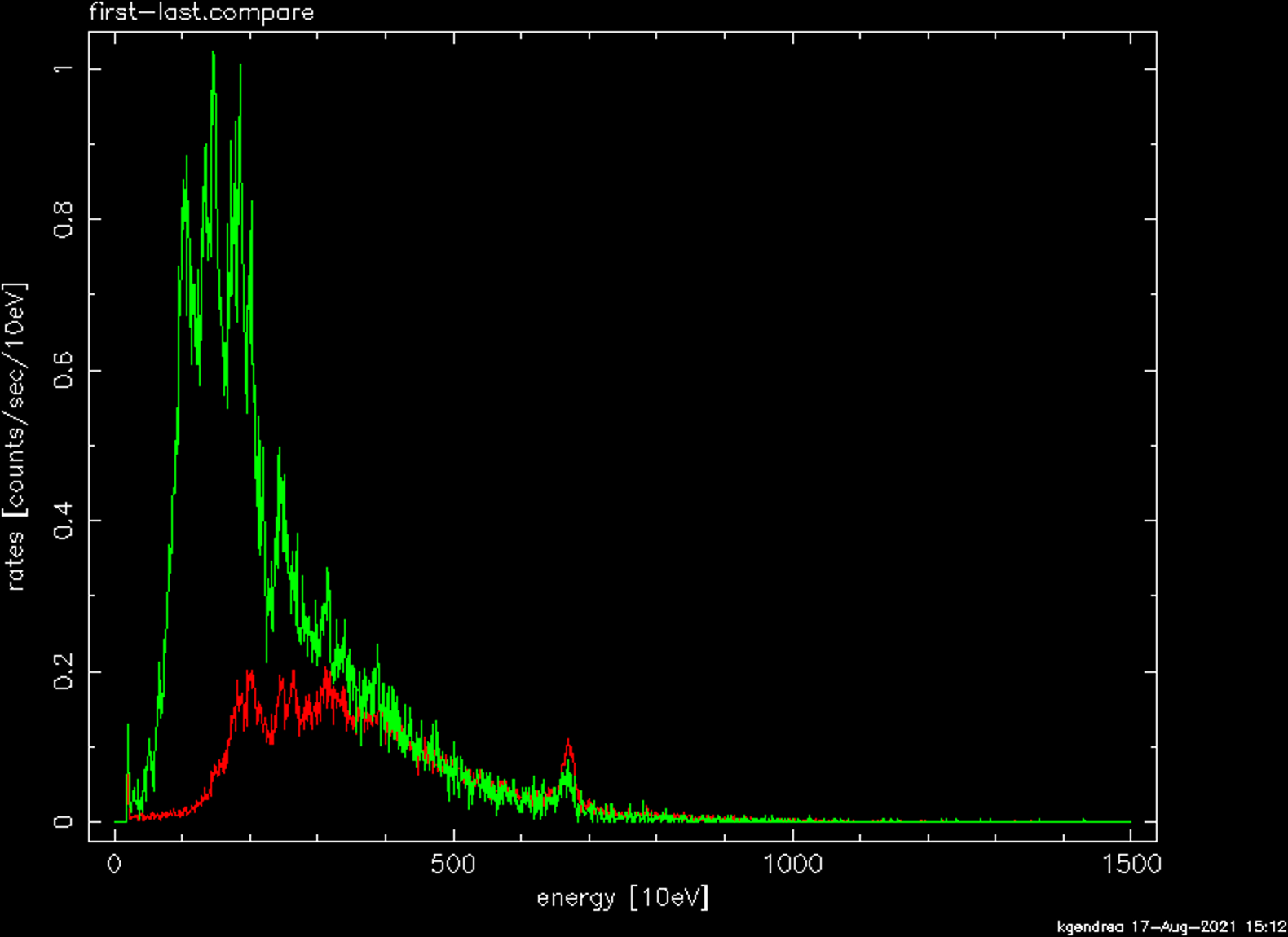NICER / ISS Science Nugget
for August 19, 2021
Continued NICER monitoring of the recurrent nova RS Oph
Multiple NICER observations each day are tracking the flux and spectral evolution of RS Ophiuchi, which (as reported last week) began a new outburst on August 8. RS Oph consists of a white-dwarf star accreting matter from a companion red-giant star; approximately once every 15 years, the accreted material reaches critical density and explodes in a thermonuclear fusion reaction on the white-dwarf's surface. A cloud of hot debris is ejected and interacts with the companion star's wind as well as the surrounding interstellar medium. The X-ray emission, currently dominated by emission and absorption from super-heated atoms in the ejecta, has brightened since NICER's first observation on August 10 by approximately a factor of 3 in photon count rate (see figure). At the same time, the spectrum has softened considerably, as the ejected material cools and expands. Within a few weeks, the debris cloud is expected to clear, bringing into view the white dwarf at the center of this nova, enabling NICER to study its post-explosion properties. The latest results of this investigation were reported this week in an
Astronomer's Telegram #14864 by Enoto et al.

Figure: X-ray spectra of RS Oph acquired by NICER on August 10 (red) and August 17 (green). The trend toward brighter and softer (lower-energy photons becoming more dominant) of the X-ray emission is evident. The multiple peaks in these spectra result from fluorescence of sulphur, iron, and other atoms in the explosion ejecta, as well as absorption in the interstellar medium, the companion star's wind, and the ejecta itself.
<< Previous
Main Index
Next >>